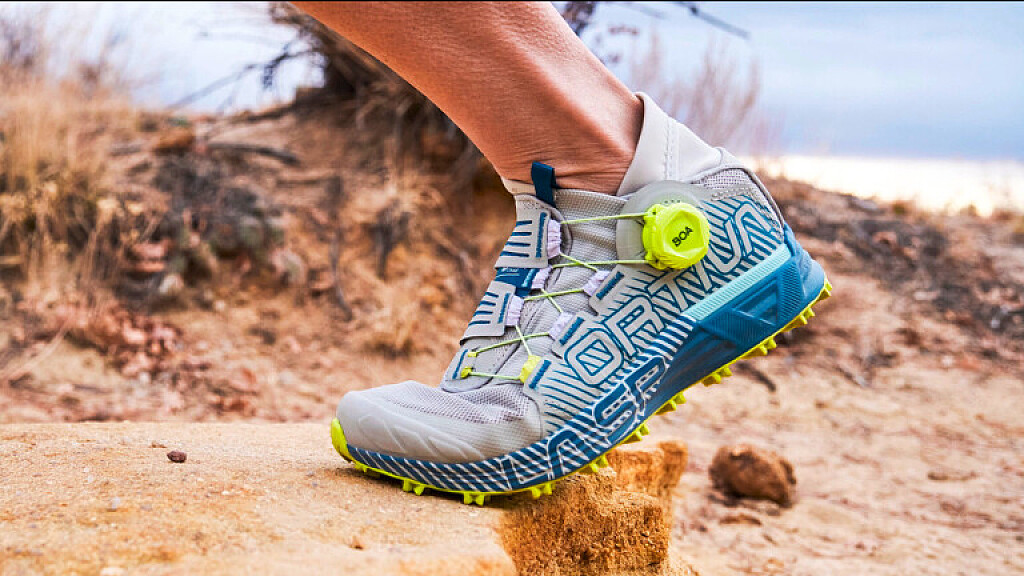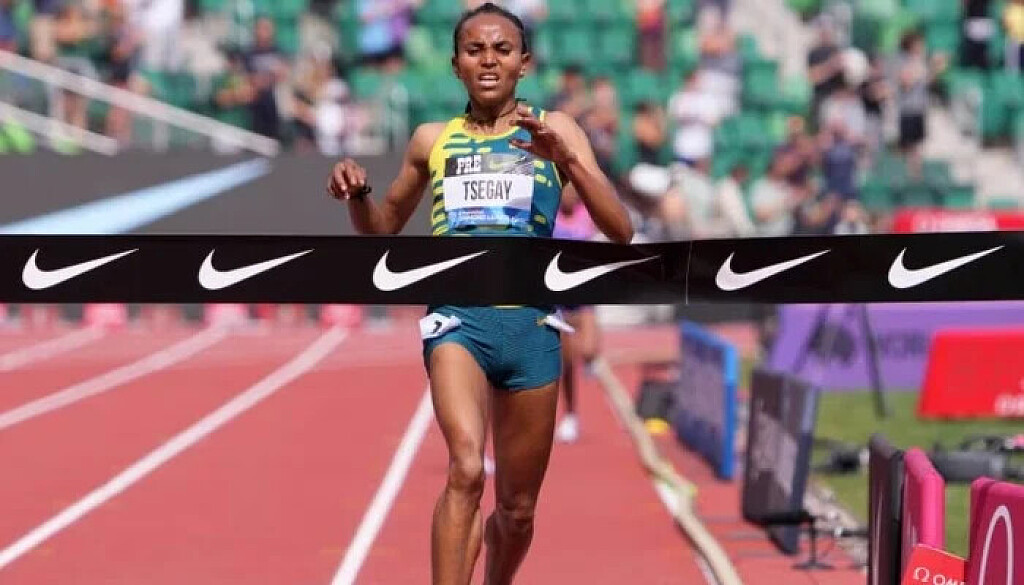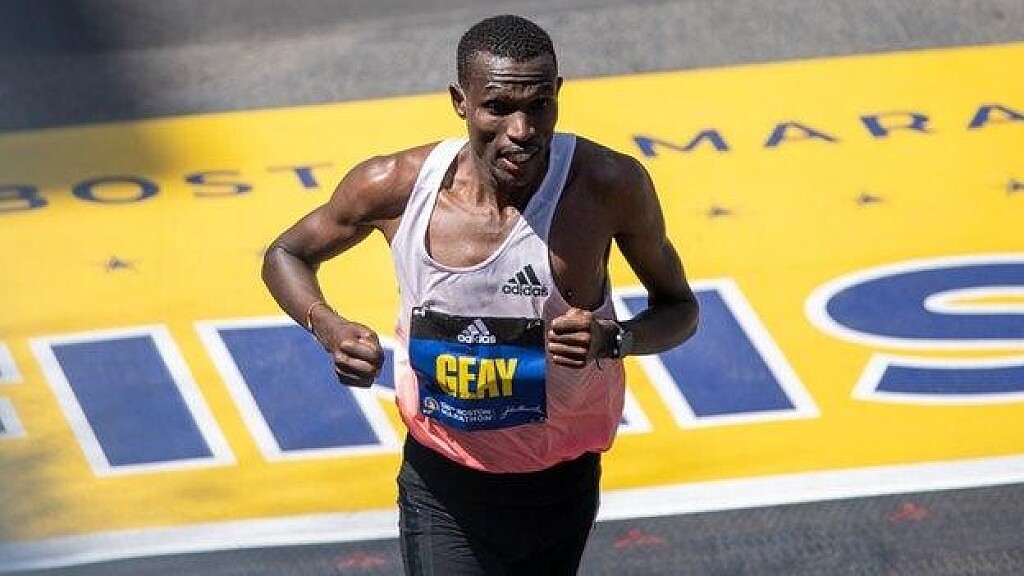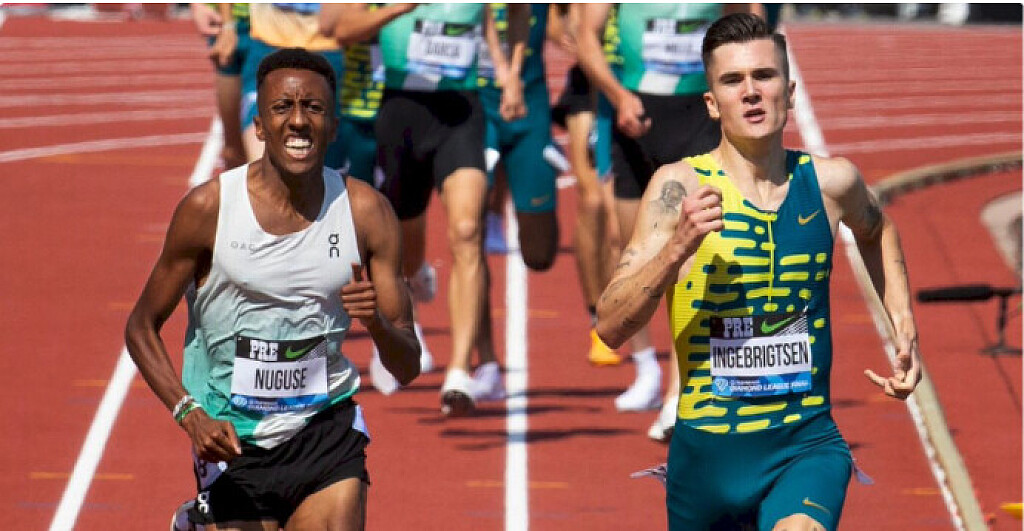Running News Daily
Top Ten Stories of the Week
9/23/2023
These are the top ten stories based on views over the last week.
Best Streaming Services for Sports 2023
Streaming services now provide the sports content we crave. We have narrowed down the top services that offer the best channel and league selections for sports enthusiasts. Numerous services exist, each presenting a distinct lineup of channels and league coverage. Continue reading to assess and compare each one, ultimately making an informed choice based on your preferences.
#1 ESPN Plus
ESPN's dedicated streaming service with a variety of sports content, including NHL, NBA, etc. The service offers access to non-market NHL games, LaLiga Bundesliga matches for $10 per month or $100 per year. An ESPN Plus subscription will include prestigious tennis events like Wimbledon and the US Open, select out-of-market MLB games, and NCAA football and basketball matchups. Don't miss the opportunity to watch rising talents in the Little League World Series and catch thrilling UFC matches included in the subscription. Please note that live NBA basketball and NFL football games are not available, and pay-per-view UFC events require an additional fee.
#2 Hulu Plus Live TV
Hulu Plus Live TV provides a unique option for sports enthusiasts. While it may lack certain league-owned channels, it comes bundled with an ESPN Plus subscription. The cost is $70 per month, and the service includes major networks, ESPN, TBS, TNT, FS1, FS2, and four RSNs. However, it does not offer MLB, NHL, NBA, or Tennis channels, except for the NFL network.
If you choose sports subscription services, then you have a Smart TV. Did you know that you don't need to have a Smart TV to watch sports streaming? To get online sports access, you just need to buy and unlock Fire Stick's, as well as connect it correctly. By "unblock" we mean to open all available 2023 sports content. To do this, you need to know how to use a VPN on Amazon Fire Stick. Once you figure it out, you can watch Netflix, Hulu, Amazon Prime, and other services without regional restrictions.
#3 YouTube TV
YouTube TV is priced at $65 per month, but presently, you can get it at $10 off for the first three months. It provides four RSNs, FS1, FS2, ESPN, TBS, TNT, and all major national networks. The standard package includes almost all league channels, except the NHL Network. You can also opt for an extra Sports Plus package, although it doesn't provide much, except BeIn and NFL Red Zone. To find out which local networks and RSNs are available in your area, enter your ZIP code on YouTube TV's welcome page.
#4 Peacock Premium
NBC's Peacock offers not only on-demand entertainment but also live sports. Subscribing to the $5-a-month Premium tier grants users access to a range of thrilling events, including English Premier League soccer, the Olympics, select WWE matches, Indy Car races, and certain PGA golf tournaments. The platform also broadcasts less mainstream sports like rugby, figure skating, cycling, and track and field. True, to see everything that is available on the service, you will need a VPN extension Chrome for a PC or a VPN for a router. Although Sunday Night Football is a standout attraction during the season, Peacock shines brightest for avid soccer and wrestling enthusiasts.
#5 Sling TV
Sling TV packages cater more to casual fans rather than offering an extensive range of options. Notably, Sling Blue lacks a single RSN for local broadcasts, but you can still access some national broadcasts. The Orange plan includes ESPN, while the Blue plan offers FS1 and the NFL network. However, neither plan grants access to ABC, which may be inconvenient for many fans. For an additional cost of $11 a month with either the Blue or Orange plan or $15 for the combined Orange and Blue plan, you can opt for the Sports Extra add-on. This add-on includes the NBA, NHL, and MLB channels, along with PAC 12, BeIn, Tennis channel, and more. The individual plans are priced at $40 a month each, while the combined Orange and Blue plan costs $55 a month. Currently, you can enjoy your first month at a 50% discount. You can check which local channels are available in your area here.
#6 FuboTV

FuboTV is currently priced at $75 per month and provides access to 35 RSNs. It features ESPN but lacks TBS and TNT, which might pose an issue for certain sports enthusiasts. Additionally, it offers local networks such as ABC, NBC, CBS, and Fox, along with FS1, FS2, BeIn Sports, the Big 10, and the Golf channel.
If you wish to enjoy additional content, you can opt for the Fubo Extra Package, available for an extra $8 per month. Alternatively, you can subscribe to the $85-a-month Elite streaming tier, which includes Fubo Extra and provides access to NHL, NBA, MLB, SEC, PAC 12, and Tennis channels. To view the complete list of local networks and RSNs available on FuboTV, click here. Feel free to read our detailed FuboTV review for more information.
Conclusion
While this roundup primarily focuses on sports content, these services operate within a broader context. The costs of monthly subscriptions can quickly accumulate, and not everyone in your household may share the same interest in sports. Depending on the package you choose, these options can cost upwards of $60 per month, and add-ons can further increase the monthly price.
It's worth considering whether these services offer value for other members of your household. The best sports streaming services often provide impressive lineups of news and entertainment programming, making them suitable for general audiences as well.
(09/15/23) Views: 187Eliud Kipchoge shares how fans play a huge role in his success
World marathon record holder Eliud Kipchoge is one of the most successful athletes in the world and his success definitely did not come overnight.
It has taken years for the four-time London Marathon champion to make a name for himself and he attested that fans have played a huge role in his career.

The legendary marathoner will be returning to the streets of Berlin with eyes set on winning his fifth title and he is banking on fans to make it a success. He attested that he loves competing in Berlin because of the passionate fans who cheer him on to keep going.
“The streets of Berlin will be packed and you know when you hear the voices of the people, those are the people passionate about the sport, those are the real fans in Berlin.
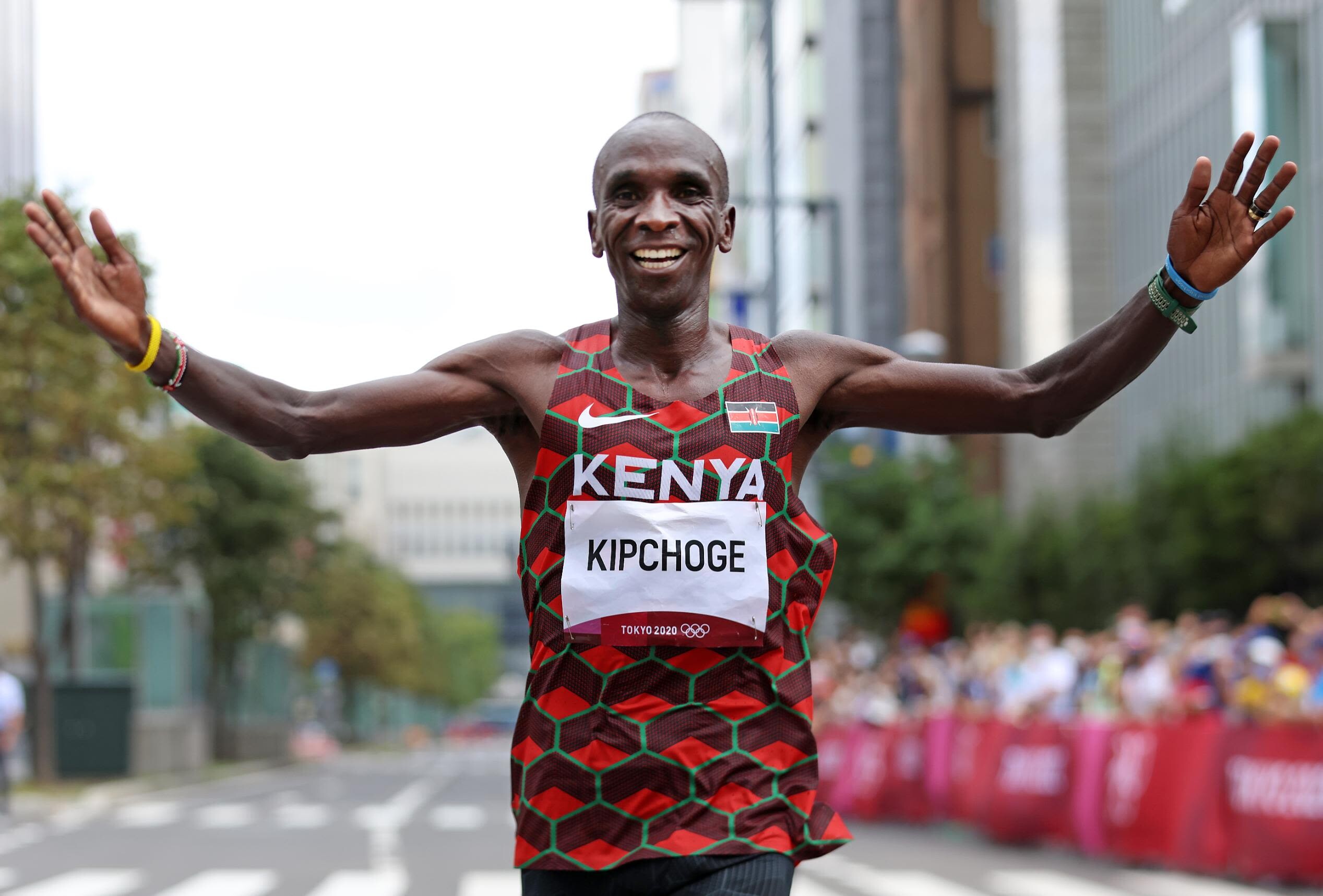
"Those are actually the people who motivate me and push me to keep going despite the challenges. I’m really looking forward to that,” he said.
The Berlin Marathon is scheduled for Sunday, September 24 and the 2014 Chicago Marathon champion will be using the event as a build-up towards next year’s Olympic Games in Paris, France.
Kipchoge opened his season at the Boston Marathon but unfortunately failed to live up to expectations after finishing sixth in the race due to a leg problem.
He went back to the drawing board and now feels ready to return to one of his favourite courses and take the win. He has set two world records on the Berlin course and he will be sure to stun his fans one more time when he sets foot on the start line for the race.
(09/18/23) Views: 127Abigael Wuafula
Can Better Shoe Lacing Make You Run Faster? BOA Thinks So.
Study shows BOA’s dial-based fit system improves trail running performance
The first running shoes were created roughly 50 years ago. Compared to running shoes today, nearly everything has changed. Outsoles are thinner, lighter, and more durable; midsoles are far more cushioned and responsive; and uppers are no longer leather but crafted of thin, breathable, engineered mesh or knits. One element, however, has remained essentially the same: laces. Today’s shoes, by and large, still use a long, thin cord crisscrossed across the instep to tighten the upper over the foot.

With all the technological advances elsewhere in shoe design it’s hard to believe that no one has come up with a more effective way of securing and holding the foot than by yanking laces through eyelets and tying them in a complicated bow that we learned when we were in preschool. Not only is the method cumbersome and imprecise, but it is also unreliable, coming undone at inopportune times far too often.
Truth be told, new tech has been developed but not widely adopted. Designers have tried various Velcro-type closures and stretchy uppers or laces. Others have gone with pull-cord designs like the Salomon Quicklace system, where you tighten the shoe by pulling on a thin, slick lace and securing it with a clip. While all improve convenience, it comes at the cost of control and comfort for many runners.
One prominent alternative gaining traction is the BOA fit system that uses a ratcheted dial to pull thin laces through guides to tighten the upper. Having tried several trail shoes outfitted with BOA fit systems, I’ll admit I am a fan. In my experience, the BOA system addresses many of the limitations of traditional laces: tightening is convenient and smooth, with micro-adjustments dialed- and locked-in with precise clicks. And, rather than the traditional top-of-the-foot web of laces buffered by a padded tongue, the BOA system tightens panels—custom-designed for each shoe model—that wrap around the foot and hold it comfortably and securely.
Besides convenience and comfort, a new study—that was, it’s worth noting, funded by BOA and carried out by the BOA-sponsored Performance Fit Laboratory—suggests that better lacing can also improve performance. A peer-reviewed white paper published by Frontiers in Sport and Active Living details the study that revealed improvements in stability, agility, and speed on a technical trail when wearing a shoe outfitted with the BOA PerformFit Wrap closure system over the identical shoe with traditional lacing. Despite the conflict of interest and some inherent limitations in the methodology, the study seems sound, and the results are intriguing.
In designing the study, the researchers chose to assess performance in an actual trail-running setting rather than inside a lab. Thirty runners (15 male, 15 female) ran a one-mile loop of a technical trail in Red Rocks Park near Denver, Colorado four times—twice in a pair of La Sportiva Cyklon with the BOA wrap system and twice in the identical shoe retrofitted with traditional top-of-the-foot laces— in randomized, counterbalanced order. During each run, scientists used accelerators and gyroscopes, pressure-sensitive insoles, heart-rate monitors, and GPS trackers to gather biomechanical metrics on the runners. After the test, participants answered questions on the shoe’s fit and performance on each section of the trail.
I was curious who tied the laces and who controlled the tension on both laces and BOA fit system, so I asked Dan Feeney, the BOA-employed biomechanics PhD who directed the study. He said that, in keeping with the “ecologically valid conditions” of the study, they let runners lace their shoes to their preference. “This is more representative of what runners will experience in the real world, so we prefer to test that way,” Feeney said.
When the numbers were crunched, the wrap-equipped shoe was shown to increase ankle stability (reducing the velocity of inward rotation) by five percent, improve heel hold by two percent, and improve running speed on all sections of the trail (uphill, downhill, and level) by one percent—with no increase in effort. In addition, the test runners rated the wrap shoe a better choice for each section of the trail, and said it fit better and inspired more confidence.
Feeney wasn’t surprised by the results, crediting the improvement to the superior fit of the engineered wrap.
“The overlapping panels’ configuration that we designed specifically holds the foot differently from laces,” he said. “The targeted hold over the instep using a wider panel enables force to be spread over a wider area, reducing pressure points. This enables superior fit by pulling the heel back into the heel pocket and ultimately providing better foot-shoe coupling.” This better hold, Feeney believes, is what improved the runner’s stability and helped them to run faster.
Given my experience with BOA-equipped shoes, I too wasn’t surprised that they provided a better hold, but I wouldn’t have predicted the improved speed. It does make sense, however, that not slipping around in a shoe would make each stride more effective. Granted, a one percent improvement isn’t much, but, as we’ve learned with four percent, going faster without increasing effort is a path to PRs.
Before we get too excited, consider that the real-world structure of the study reduces control of all the variables and the likelihood that results can be reproduced. The paper also acknowledges the limitation that everyone involved in the study was aware of what type of lacing they were testing at all times, which could bias the results.
Even with the limitations and biases, however, this study is a reminder—in a world obsessed with the propulsive properties of foam and plates—that a shoe is a complete system and every element, even fit, affects performance. Rather than increasing midsoles to dangerous heights, perhaps designers could spend more energy improving the connection between the shoe and the foot.
BOA has made a good start, although there are some drawbacks. One limitation on the Cyklon and other one-dial shoes is the inability to vary the tension on different parts of the foot. With traditional laces, I can leave the lower eyelets loose while tightening those closer to the ankle—albeit clumsily and imprecisely. The BOA dial, in contrast, tightens the entire system at the same rate. While the independent wrap panels are designed to optimize the force on each section, they don’t allow for individual foot-shape variations and fit preferences (except on shoes with two BOA dials, where each tightens a different set of panels wrapping the top and bottom of the instep—a significant improvement in the technology in my opinion). BOAs are also more expensive than laces, and, admittedly, they look geeky and out of place if you’re wearing your running shoes for anything other than running, which most people do with their road shoes.
So it may be some time before we see BOAs on anything but high-performance trail shoes. But on my morning run today, as I re-tied my laces for the second time and still felt unhappy with the tension, I longed for a day when I could dial in the fit on all my shoes.
(09/16/23) Views: 120Edward Cheserek, Irine Cheptai set PBs 2023 Copenhagen Half Marathon
Edward Cheserek and Irine Cheptai set personal bests on their way to leading the men and women 2023 Copenhagen Half Marathon results on Sunday. The Top 25 results below shows Edward Cheserek running 59:11 and Irine Cheptai clocking 1:05:53
The 2023 Copenhagen Half Marathon results and report on Sunday, 17 September, as Kenyan runners Edward Cheserek and Irine Cheptai won the men’s and women’s respective titles with a pair of quality runs to set personal bests in the Elite races.
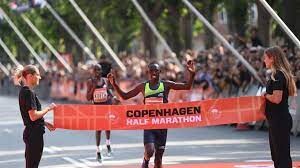
On the men’s side, the top six finishers went faster than 60 minutes today, led by Cheserek, who crossed the finishing line at a new personal best time of 59:11. This was the first time Cheserek was breaking 60 minutes for the half marathon with his previous PB of 1:00:13 set in 2022 in Valencia.
Following the former Oregon Duck and NCAA standout home on Sunday was his countryman Bernard Koech, who clocked 59:13 in second place. Ethiopia’s Gemechu Dida ran 59:31 for third place and completed the podium.
The women’s 2023 Copenhagen Half Marathon results and report was led by three-time world champion Irine Cheptai from Kenya, who set a new personal best today, stopping the clock at 1:05:53.
Kenyan runners swept the podium in the women’s race with Winfridah Moseti finishing in second place with 1:06:40, followed by countryman Jesca Chelangat, who ran 1:07:03 for third.
Meanwhile, Jacob Sommer Simonsen was top Denmark finisher today, clocking in at 1:03:40 to take the national title and finishing 25th overall.
On the women’s side, the national winner was Carolien Millenaar, who ran 1:14:50 for first-place among the Denmark runners and
(09/17/23) Views: 114Record-breaking registration numbers reported for 2024 Boston Marathon
The 128th Boston Marathon presented by Bank of America has set a remarkable record as it closed its qualifier registration window on Friday, Sept. 15. An astounding 33,000 applications were received by the Boston Athletic Association (B.A.A.) surpassing the previous record of 30,458 entries in 2019.
The applications for the 2024 Boston Marathon came from runners from 127 different countries and all 50 U.S. states, along with Washington, D.C. Qualifying athletes earned their spots in more than 528 races worldwide, showcasing the event’s international appeal. Impressively, applicants ranged in age from 18 to 82, underlining the race’s inclusivity and ability to inspire athletes of all ages.
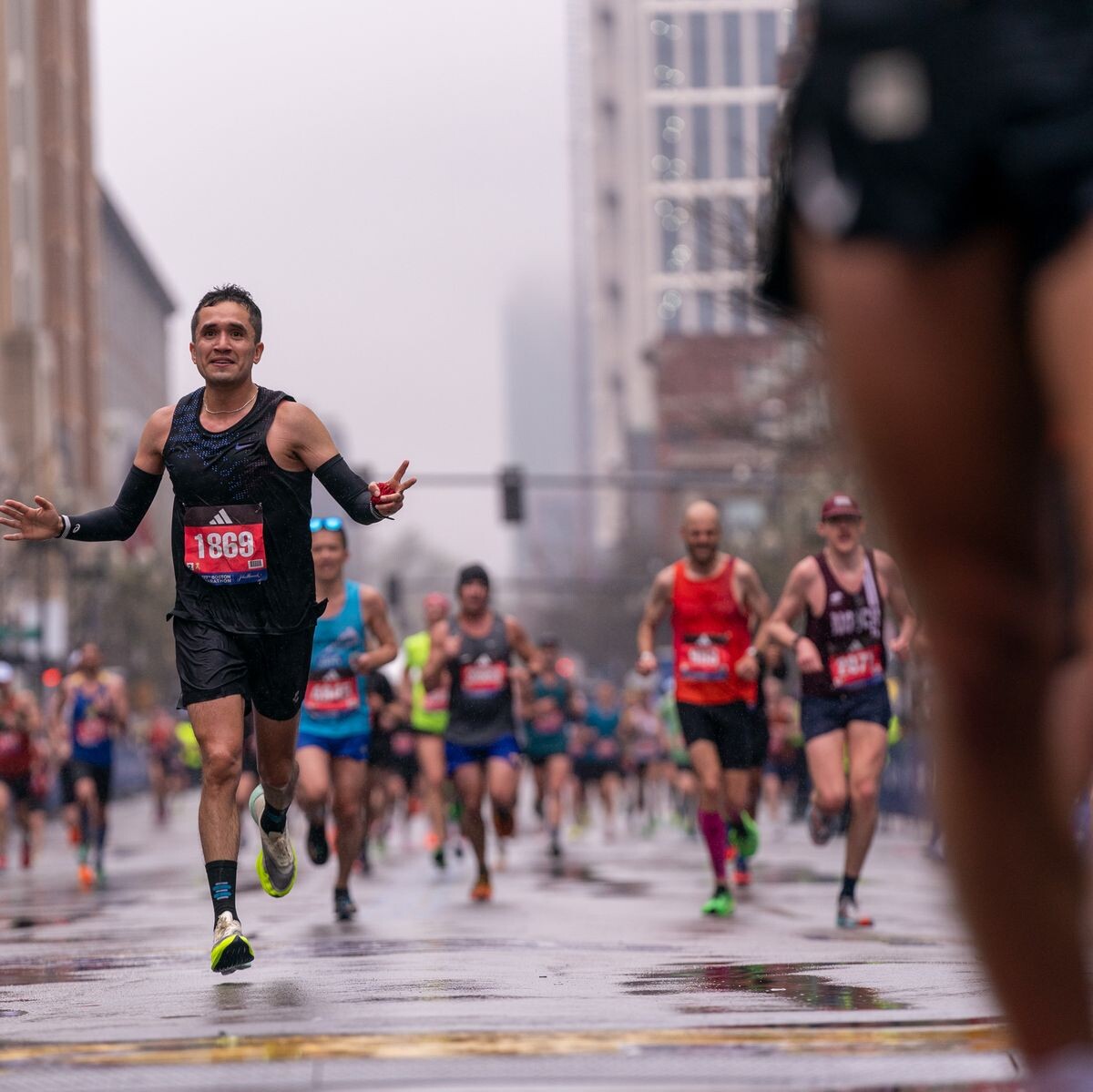
Despite the surge in applications, not all qualifiers will secure a spot in the 128th Boston Marathon. The B.A.A. is currently verifying all qualifying times and will notify applicants of their acceptance or non-acceptance within the next three weeks.
To maintain transparency, the organization has not speculated on a “cut-off” time for entry and requests athletes’ understanding and patience during this verification process.
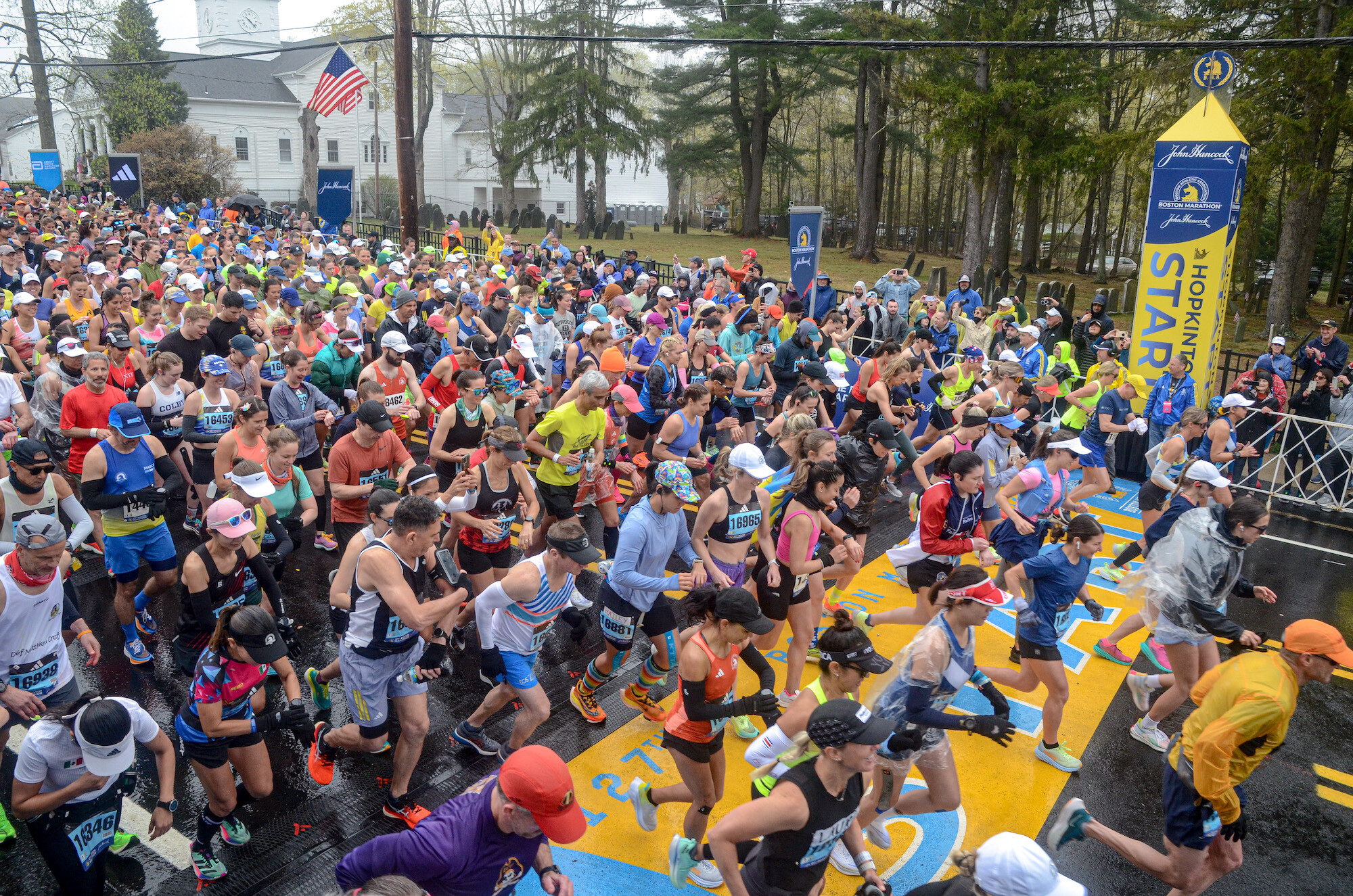
Jack Fleming, President and CEO of the B.A.A. commended the global running community’s passion and commitment to participating in the iconic race. Fleming stated, “Receiving a record number of applications is a testament to the strength of road racing around the world and speaks to runners’ commitment to taking on the challenge of earning a Boston Marathon qualifying time with the goal of reaching the start line in Hopkinton.”
For individuals who do not make the cut or lack a Boston Marathon qualifying time, there’s still an opportunity to participate through the Bank of America Boston Marathon Official Charity Program. This program includes 160 non-profit and charitable organizations that have begun accepting applicants for the upcoming event.
(09/18/23) Views: 111Saina and El Goumri win Sydney Marathon titles
USA’s Betsy Saina held off a late challenge from Ethiopia’s Rahma Tusa to take the women’s title, while Othmane El Goumri claimed the men’s race win at the Sydney Marathon presented by ASICS, a World Athletics Platinum Label road race, on Sunday (17).
Saina, who finished fifth at the Tokyo Marathon in March, clocked 2:26:47 to win by six seconds ahead of Tusa, while Gladys Chesir claimed third place in 2:28:41.
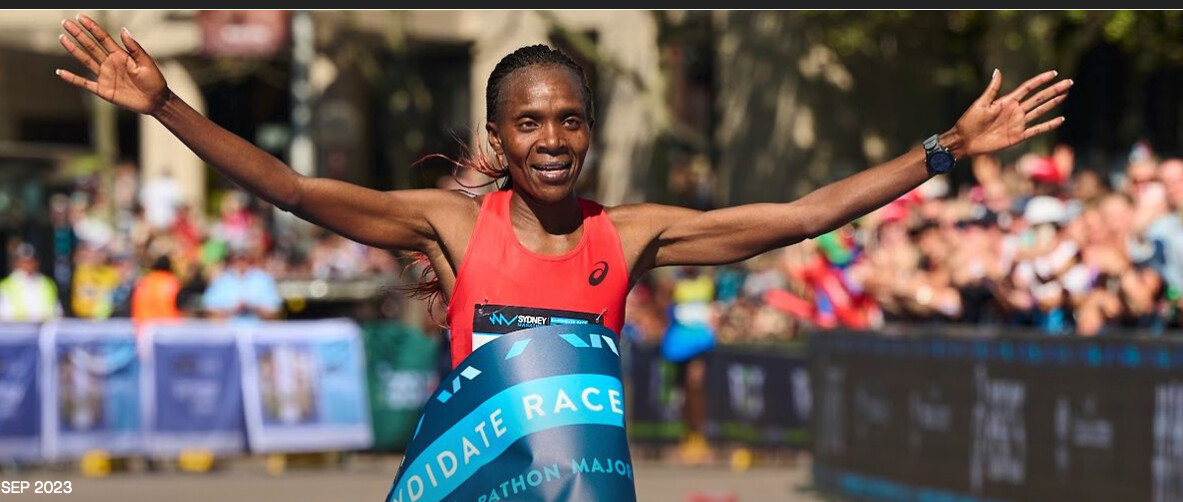
El Goumri’s winning time was 2:08:20 as he triumphed by 23 seconds ahead of Kenya’s Laban Kipngetich, with Ethiopia’s Getaneh Molla placing third in 2:11:22.
Racing on a hot morning, Saina formed part of a pack that passed 10km in 34:57 and the half way mark in 1:14:23 – with Kenya’s Angela Tanui to the fore at that point.
They reached 30km in 1:46:22, with a number of athletes still in contention.
Then Saina and Tusa started to make a move. As they left their rivals behind, they were together through 35km in 2:02:49, with Tanui back in third in 2:03:35.
Saina was still clearly feeling good and she pushed again to create a gap on Tusa, passing the 40km point in 2:19:30, 16 seconds ahead of the Ethiopian. But Tusa wasn’t content to sit back and watch the title run away, so she made a late charge. While she was able to close the gap to six seconds by the finish, it wasn’t quite enough, and Saina secured the crown, with Tusa taking second place and Chesir coming through for third.
Tanui finished fourth in 2:28:52, while Ethiopia’s Bekelech Borecha was fifth in 2:29:13. Australian record-holder Sinead Diver won the national marathon title in 2:31:27, finishing eighth overall.
In the men’s race, El Goumri made a move ahead of the 30km mark, but he had formidable company in the form of Tanzanian record-holder Gabriel Geay, who set his PB of 2:03:00 in Valencia last year.
After a half way split of 1:03:56, they passed 30km together in 1:30:58 but Geay could not maintain the pace and he dropped to third by 35km – with El Goumri ahead in 1:46:11 and Kipngetich overtaking Geay to pass that point in 1:46:28 to Geay’s 1:46:58.
Geay dropped out from the race after that point, with El Goumri forging ahead to win in 2:08:20 and Kipngetich claiming second place in 2:08:43. Molla, who had reached 35km in 1:47:31, claimed third place in 2:11:22.
He was followed over the finish line by his Ethiopian compatriot Limenih Getachew, who finished fourth in 2:12:34. Kenya’s Moses Kibet, who was defending his title after winning last year in an Australian all-comers' record of 2:07:03, was fifth in 2:13:28, while Oceanian record-holder Brett Robinson won the Australian title in 2:23:05, and like Diver he finished eighth overall.
With more than 17,000 entrants, the event was the largest marathon to ever take place in Australia.
(09/17/23) Views: 109Ethiopia’s Gudaf Tsegay sets 5,000m world record at Prefontaine Classic
On Sunday afternoon at the Diamond League Final in Eugene, Ore., world 10,000m champion Ethiopia’s Gudaf Tsegay almost achieved the unthinkable: breaking the women’s 5,000m world record in 14:00.20—nearly becoming the first woman in history to run a 5K under 14 minutes.
Tsegay surpassed the previous 5,000m world record of 14:05.20 by five seconds, which was set by her rival Faith Kipyegon earlier this year at the Paris Diamond League. Tsegay battled with world cross-country champion Beatrice Chebet until the final three laps when the Ethiopian pulled ahead.
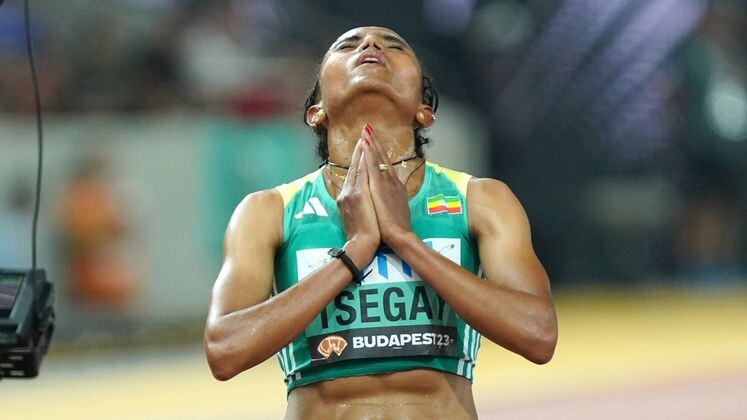
The pace for the 5,000m final was set for 14:00 flat, with the pacers taking Tsegay and Chebet through 3,000m in 8:26.03. Tsegay threw down a 2:09 final 800m to shake off Chebet and become the first woman to threaten the 14-minute 5K barrier.
Chebet finished second behind Tsegay in 14:05.92, the third-fastest time in history. Ethiopia’s Ejgayehu Taye rounded out the Diamond League 5,000m final podium in 14:21.52. Kipyegon chose to run the 1,500m on Saturday and did not enter the women’s 5,000m at the Prefontaine Classic.
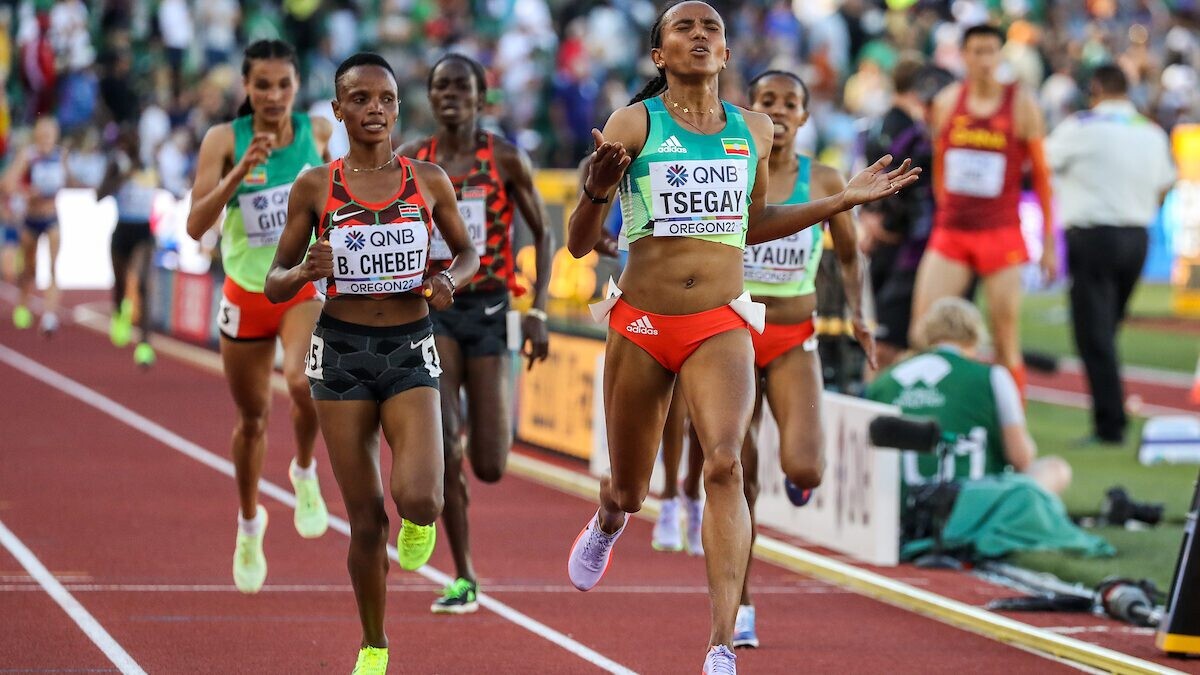
Tsegay had an up-and-down 2023 season, winning the world 10,000m title in Budapest, then finishing a disappointing 13th place in the world 5,000m final several days later.
This is the second world record of Tsegay’s career. In 2021, she ran an indoor 1,500m world record of 3:53.09 in northern France.
(09/18/23) Views: 106Marley Dickinson
Geay, Korir, Kibet and Tanui headline fastest Sydney Marathon field
Gabriel Geay, Moses Kibet, Angela Tanui and Judith Korir will be among the athletes in action when the Sydney Marathon presented by ASICS, a World Athletics Elite Platinum Label road race, takes place on Sunday (17).
The field’s experience in global and major marathon racing will make it the fastest marathon pack ever assembled in Australia, with homegrown and international talent battling it out on the event’s new course.
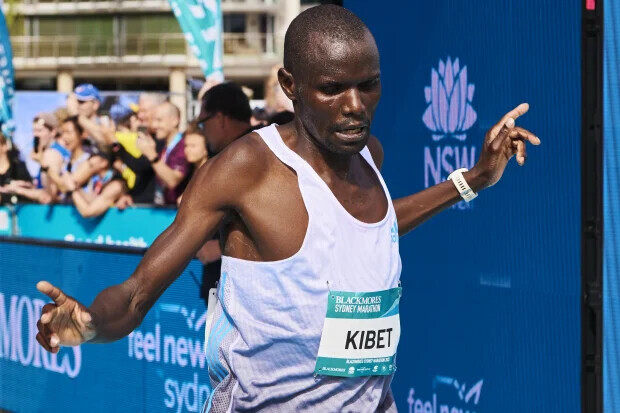
In the women’s field, Kenya’s 2022 World Championships silver medalist and Paris Marathon champion Korir makes her Australian debut. The 27-year-old, who finished sixth in the London Marathon in April, ran her PB of 2:18:20 when finishing runner-up to GotytomGebreslase on the global stage in Oregon last year.
She faces six other sub-2:22 women, including her compatriot Tanui, who ran 2:17:57 to win the Amsterdam Marathon in 2021. She went on to place fourth in the Tokyo Marathon the following year and then secured sixth place in Oregon.
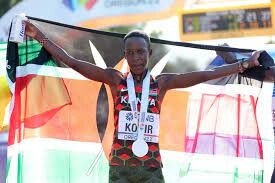
Haven HailuDesse is among the seven Ethiopian athletes in the field and she will look to complete her first marathon since winning in Osaka in 2:21:13 in January. Her PB of 2:20:19 was also set in Amsterdam in 2021.
Eritrea’s NazretWeldu finished fourth and then eighth in the past two World Championships marathons, while SiraneshYirgaDagne has a best of 2:21:08.
Australian marathon record-holder Sinead Diver, who broke the national marathon record last year in Valencia with a time of 2:21:34, will lead the local elite field, making her Sydney Marathon debut.
The field also features USA’s Betsy Saina, a 2:21:40 marathon runner at her best.
Tanzanian record-holder Geay leads the men’s field with his PB of 2:03:00 set in Valencia last year. The 27-year-old went on to finish second in the Boston Marathon in April, clocking 2:06:04 behind winner Evans Chebet (2:05:54), and he placed seventh in the World Championships marathon in Oregon in 2022.
But Kibet has more experience when it comes to racing in Australia as he won last year’s Sydney Marathon, setting an Australian all-comers' record of 2:07:03 to beat his Kenyan compatriot Cosmas Matolo Muteti by just two seconds.
Oceanian record-holder Brett Robinson, who broke his Australian compatriot Rob de Castella’s long-standing area record in Fukuoka last year by running 2:07:31, will lead the domestic contenders.
The field features a total of nine sub-2:06 men, with Geay and Kibet joined by Ethiopia’s Getaneh Molla (2:03:34), Kenya’s Jonathan Korir (2:04:32), Ethiopia’s Abayneh Degu (2:04:53), Kenya’s Abraham Kipkemboi Kiptoo (2:05:04), Morocco’s Othmane El Goumri (2:05:12), Ethiopia’s Amedework Walelegn (2:05:27) and Kenya’s Laban Korir (2:05:41).
(09/15/23) Views: 100World Athletics
Yared Nuguse Shatters American Mile Record At Prefontaine Classic
Yared Nuguse shattered the American record in the Bowerman Mile, finishing second to Norway's Jakob Ingebrigtsen in 3:43.97 at the Prefontaine Classic.EUGENE -- Yared Nuguse shattered the American record in the Bowerman Mile, finishing second to Norway's Jakob Ingebrigtsen in 3:43.97 at the Diamond League Prefontaine Classic at Hayward Field.
Nuguse lowered the previous American mark of 3:46.91 set by Alan Webb in Belgium in 2007. His time now ranks fourth on the all-time world list.
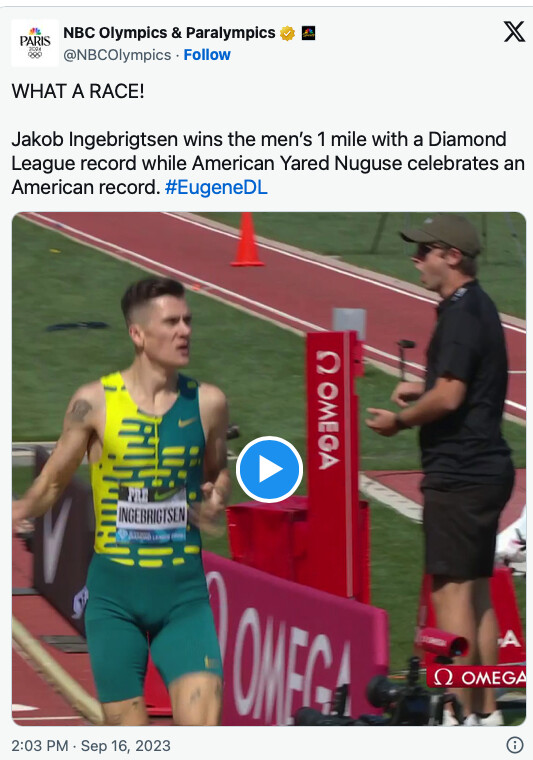
“I feel like a 3:44, 45 felt reasonable, but 43 is the same second as the world record which is absolutely insane that we were able to do that today, but still (have) a great race,” Nuguse said.
Ingebrigtsen won the race in the third-fastest time in history 3:43.73, establishing new Diamond League, Pre Classic and European records while pulling the entire field to extraordinary performances. Everyone in the race clocked sub-3:54 and established either a new season best or personal best. There were also there national record and world U20 mark established.“I think he pushes all of us to be better, and that’s really huge," Nuguse said of Ingebrigtsen. "To have someone like this at the time same time that I’ve come to my peak is just really big, to make me catch things that I didn’t think were possible, like running 3:43.”
As expected, from the early going, this shaped up to be a two-man race between Ingebrigtsen and Nuguse. In the pre-meet press conference Nuguse stated that he wanted the American record. Ingebrigtsen playful told Nuguse to hang with him as long as he could and he just might get it.
And he was right.
Pacer extraordinaire Eric Sowinski kept the two runners on world-record pace, taking them through 800m in 1:51.67. When he stepped off slightly before 1200m, Ingebrigtsen had covered the next quarter in 56.06 with Nuguse right on his heels. The duo hit the bell in 2:47 and the race against the clock and each other was very much on.
“He does a very good race," Ingebrigtsen said of Nuguse. "Obviously he’s in a good enough shape to run what he does, but at the same time today I wanted to race where I could challenge myself to really set out at a decent pace, somewhat conservative, and then I go as hard as I could the last two laps to try to run as fast as I could. So it was very good.”As the two hit the back straight, it was apparent from the green LED pacing lights on the rail that they had fallen about two strides behind world-record pace but the intrigue was far from over.
They remained tight rounding the next to last curve when Ingebrigtsen turned the screw with 150 to go and began to open slight daylight. Nuguse covered the move and pulled right back onto the heels of the leader.
Coming down the stretch, Nuguse grimaced as he tried to keep up with Ingebrigtsen, moving wide to lane two to try and get passed but he was unable to close the gap.
“This is gonna be my last chance for a while to beat him, I might as well just pour my whole heart into it," Nuguse said of his mindset late in the race. "It was the perfect race because I just felt very unbothered the entire time, so it was all just really gritting it out and seeing who could run faster. But you know, definitely tough competitor but still felt really good about it.”
Nuguse credited the passionate crowd at Hayward Field -- there were 12,634 ticketed spectators in attendance -- with providing him with the home-cooking spark he needed late in the race.
"“Definitely that third lap, I feel like having that crowd just going nuts was really huge," he said. "I could just feel they’re all cheering for me for once, when I feel like in Europe they’re mostly cheering for him. It was still just a really amazing crowd, I always love hearing a big roar, especially here in Eugene.”While Nuguse can kick back into the offseason and start recharging for the Olympic year -- he said, his plans are to “just have a ton of fun tonight, not think about running for a month” -- Ingebrigtsen has one more race to go in his season, and on a tight turnaround. The 5000m world champion is favored in tomorrow's men's 3000m.
"Obviously I was here to run the mile," Ingebrigtsen said of his focus. "I’m jumping in the 3k because I got the opportunity. But now it’s all about getting back home to the hotel, eat, sleep, try to prepare as good as I can and we’ll see tomorrow.”
After the meet ends, is Ingebrigtsen's year done?
"Not quite," he said. "Hopefully getting married next weekend, so I think I have to prepare for that as well.”
(09/17/23) Views: 97Joe Battaglia Flotrack
Three key workouts to PB your next marathon
Mastering the art of a half marathon or marathon can take many years of consistent training. These diverse workouts should be added to your repertoire–they’ll help you nail pacing, build speed for hilly courses (that also translates to strength on the flats) and boost your confidence prerace. If you have an area you need to work on, you’ll notice it after running these sessions and can make it a focus. Consistency (and fun) are essential.
1.- 3K-2K-1K ladders
A great workout to pop into your training regime when your legs are feeling slow or sluggish, these ladders will inject some speed and help you tune in efficiency and race day pacing.

Warm up with ten minutes of easy running and some drills and strides.
2 x 3K at half marathon pace, 2K at 10K pace, 1K at 5K pace, with 2 minutes of recovery between reps and 4 minutes of recovery between sets.
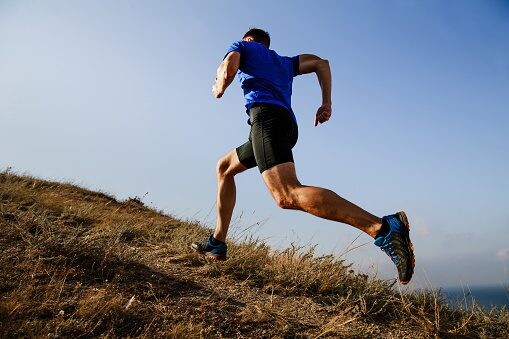
Cool down with ten minutes of easy running.
2.- Marathon to half marathon pace progression repeats
This session is all about the negative splits. Start slightly slower than you marathon pace and increase your speed each repetition, working down to half marathon pace. You’ll boost confidence with each repetition and practice pushing harder toward the end of your race.
Warm up with 10 minutes of easy running.
3 x 10 minutes at half-marathon pace, with 3 minutes of easy recovery between each.
Cool down with 10 minutes of easy running.
3.- Three-minute hill repetitions
Warm up with 10-15 minutes of easy running.
8 x 3-minute hills at marathon pace (moderate grade hill of 4-6 per cent), run easily down the hill for recovery.
Cool down with 10 minutes of easy running.
This workout is a great confidence booster and can be done near the end of your marathon training cycle. A three-minute hill is a long one–you won’t be running full-out and will gain strength and endurance by powering through. Work on maintaining a steady pace up the hill, and embrace the discomfort of this workout–it’s a great reminder of how uncomfortable marathons are.
(09/18/23) Views: 97Keeley Milne






